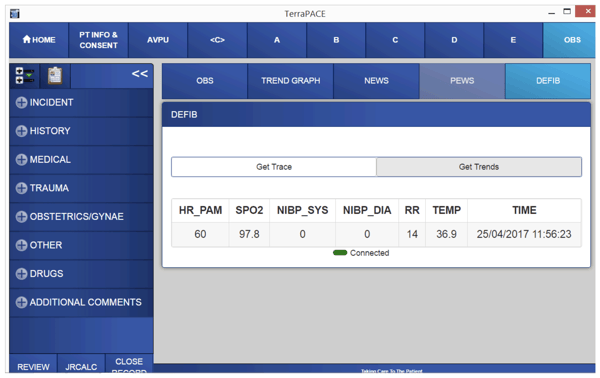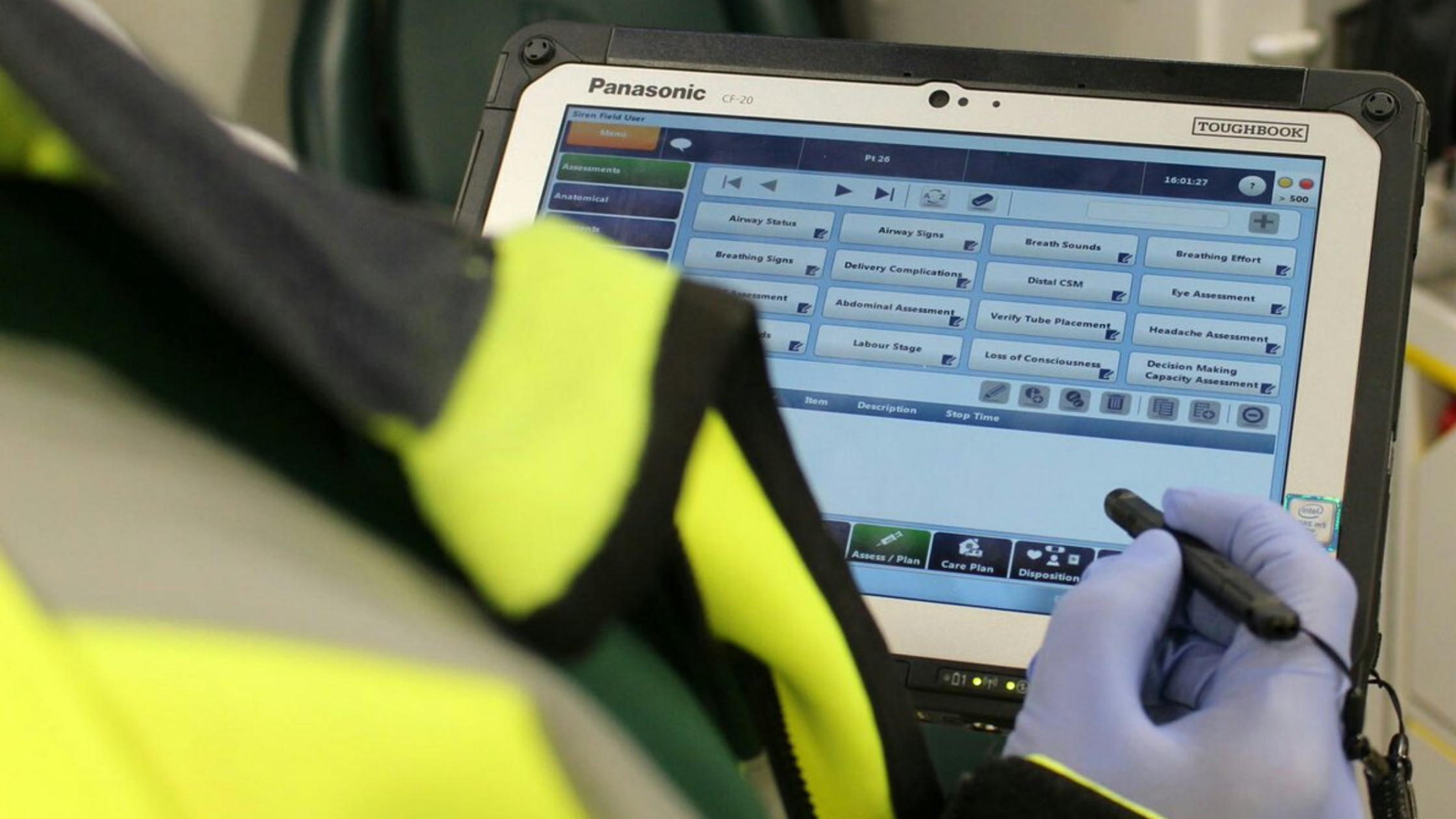The EPRF allows paramedics to record key information around the patient’s clinical condition and the treatment provided. Patient information can be sent direct to paramedics when they're required to attend an incident. Whilst en-route, paramedics can review salient information via the EPRF in the ambulance and start planning the best course of action.
Whilst all this is happening, the EPRF system can also pre-populate the corpuls defibrillator with patient information, such as name, age and weight if known, saving time and the need to re-do work already done. Whilst on-site, any information added to the corpuls defibrillator can be sent back to the EPRF system in real time, allowing clinicians at a receiving location to review relevant details whilst the patient is en-route. All the recorded data is also available for reporting purposes supporting clinical audit, development and future learning.
Clearly, there are many potential benefits of EPRF functionality for Ambulance Services, receiving hospitals and ultimately the patients being served. For example:
> The EPRF will make it easier and more accurate for ambulance crews to record important patient information.
> Ambulance crews can capture clinical diagnostic data, for example ECG traces from a defibrillator and easily add them to the EPRF.
> Ambulance crews will have access to all of the clinical pathways available to the patient - ensuring they get the most suitable treatment as quickly as possible (Right Care, Right Place, Right Time).
> The information collected on the EPRF can be accessed electronically by hospital staff before the ambulance crew arrives – providing important information in advance of the patient arriving at hospital.
> The aggregation of all relevant information in to one place allows for a more detailed and effective handover to happen between paramedics and the receiving hospital.
> The information collected will be analysed by the ambulance service to help changes and quality improvements in patient care.
Corpuls Integration with EPRF
Given the obvious benefits provided by EPRF systems, and it's more ubiquitous use within the EU, the corpuls c3 device has the capability to link with multiple EPRF systems. The flexible Software Development Kit (SDK) provided by corpuls enables EPR developers to integrate with the defibrillator in a two way manner, so communication between devices is bi-directional.
For example, the corpuls C3 and C3T defibrillators fully integrate with Terrafix's popular TerraPace EPRF solution, enabling two way communication between the defibrillator and the TerraPace platform. The two way communication is an important factor as it allows for the patient data, for example, to be pre-populated on to the defibrillator before the paramedics arrive at any incident.
As the corpuls defibrillator can transmit data back to the EPRF system, it ensures that any inaccuracies in the initial data (i.e. if the patient age is wrong) is rectified. Furthermore, any events (administered medication etc) added to the corpuls mission log, alongside ECG data, can be transmitted back to the EPRF system ensuring that accurate information on treatment is captured and passed off to the receiving hospital.
The flexible connectivity methods of the corpuls ensures that communication with EPRF devices (e.g. the Getac Tablet) is as easy as connecting your mobile phone to your car. The ease of connectivity also allows for the swap out of defibrillators, for example, when a device needs a service, with very limited human intervention.
Figures 1 and 2 show example screen grabs of the ECG and averaged trend data on the Terrafix TerraPace application platform.

Figure 1: ECG Data on the TerraPace Platform from the corpuls3 device

Figure 2: Averaged Trend Data (not all sensors attached) on TerraPace Platform from the corpuls3 device
Utilising web-based technologies and flexible SDKs means the corpuls device can integrate seamlessly with all systems within trusts as required (i.e. there is no requirement for native application installations) and a various data fields can be transferred between the corpuls and the EPRF system. For example;
> D-ECG Data from the Mission
> HES Data
> Background ECG Data
> Mission Index
> Patient Data
> Mission Events (drug administration etc)
EPRF and Telemedicine
Combining the integration with EPRF systems and the advanced telemedicine functionality, the corpuls C3 and C3T devices not only act as excellent Monitor Defibrillators, but information platforms in their own right. The core driver behind these innovations is to help improve patient care through the timely and accurate transmission of patient data. The corpuls.mission functionality is an advanced two-way communication platform, allowing paramedics to video call for support, send and receive images, data files and instruction on treatment. Moreover, corpuls.mission also provides the platform for ECGmax - 22 Leads from 10 electrodes - and the Cardiac Electrical Biomarker (CEB). Never before has a Medical Device been such a conduit for so much information. This is the future of medical technology.
#futureproofmedicaltechnology
.jpg?width=342&height=509&name=OrtusAcademy(YELLOWGradient).jpg)




Leave Comment